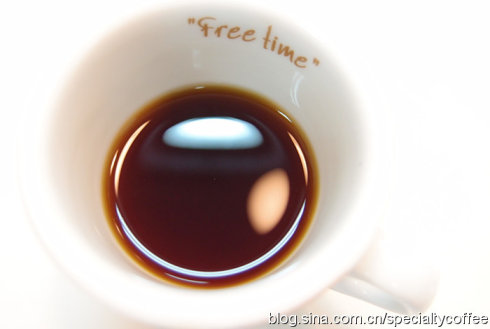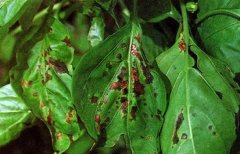Coffee brewing method Philharmonic pressure method Coffee Philharmonic pressure positive and negative pressure is what coffee making video
"AeroPress" is a new coffee-making appliance launched by AEROBIE in 2006. Its inventor, Alan Adler, is a lecturer in mechanical engineering at Stanford University in the United States. It has more than 40 patents in the United States and other countries. "Philharmonic pressure" is easy to use, put coffee particles in the pressure bucket, soak in water for 10 seconds, gently and slowly press the pressure bar in 20 seconds, a total of only 30 seconds, a cup of delicate, rich, supple, delicious coffee will be made.
"Philharmonic pressure" outer packaging:
Unlike the drip filter coffee machine, although the soaking time is very short, it can fully soak the coffee particles and exert soothing and gentle pressure during extraction. It draws lessons from the pressure bar principle of the French press, but the coffee liquid is pressed out from the bottom of the apparatus through the filter paper, and the coffee particles are finer than those required by the French press, and the contact time between coffee and water is shorter but the pressure is higher, thus ensuring that the coffee drink is almost free of coffee powder. It uses the extraction method of an Italian espresso machine, but a layer of filter paper is added to the powder bowl, resulting in lower water temperature and lower pressure, resulting in a simpler structure and a much lower cost. but the extracted coffee tastes richer and softer without bitterness. Kenny Kenneth Davids, a famous American coffee reviewer and author of several coffee monographs, commented on "Philharmonic pressure": "if used correctly, Philharmonic pressure can make espresso and American coffee with a pure sense of export, but its price is only 20 or 1/30 of that of many household coffee machines." Eight reviewers from LOCALS ONLY COFFEE, a company in Washington State, where the coffee industry is well developed in the United States, gave the highest "five-star" rating after trial.
The state of "Philharmonic pressure" when extracting coffee:
All the components of "Philharmonic pressure" are as follows:
"Philharmonic pressure" has held three international competitions abroad. The following picture is a foreign version of "Philharmonic pressure" in different colors.
Photo Source: shotzombies
In use, we will find:
The soaking time required by "Philharmonic pressure" is only 10 seconds, but it can be fully soaked, thus ensuring that the coffee can be extracted quickly and have a stronger flavor.
"Philharmonic pressure" requires a lower water temperature of-80 degrees, so that it can extract a more supple taste.
The extraction time of "Philharmonic pressure" is only 20 seconds, which is much shorter than that of other utensils (such as the French kettle and the drip filter coffee machine are all at least more than three minutes). Therefore, the coffee extracted does not taste bitter.
The press speed of "Philharmonic pressure" is only about 10 centimeters in 20 seconds, and the movement is gentle, so it can extract the richer taste of coffee.
Due to the low water temperature and short extraction time, the acidity of coffee extracted with "Philharmonic pressure" is 1/5 of that of dripping coffee, which is more comfortable for many coffee drinkers.
Instructions for use:
1. Remove the pressure bar and powder bowl from the filter cartridge:
2. Put a piece of filter paper at the bottom of the powder bowl, and then buckle the powder bowl into the filter cartridge (350 pieces of filter paper attached with the appliance):
3. Place the filter cartridge on the coffee cup (make sure the cup is a little bigger and heavier to prevent tipping):
4. Put in two tablespoons of coffee powder particles:
5. Slowly pour in about 80 degrees hot water, the amount of water to the scale 2:
6. Stir with a stirring rod for about 10 seconds:
7. Soak the rubber ring of the pressure rod into the filter cartridge, press down half a centimeter (0.6 cm), and then maintain the pressure so that the pressure rod can reach the coffee particles at the bottom in 20 to 30 seconds. Note: pressure is the key to extracting satisfactory coffee:
8. A cup of double espresso is finished. Add hot water and it becomes American coffee; add hot milk and it is latte coffee. How's it going? Easy!
9. Clean up: remove the powder bowl, push the pressure bar, and eject the coffee "pressed powder":
10. Rinse the rubber ring on the head of the pressure bar with water and wipe off coffee powder and water stains.
Use tips:
Hot water of about 80 degrees is recommended. Calculate the time it takes to boil a pot of water. The temperature of boiling a pot of water in three strokes and four times is about 80 degrees; the temperature of hot water in a household thermos is about 80 degrees.
The thickness of coffee particles. Fine grinding, coffee particles for drip filter coffee machine and espresso machine can be used; if a blade grinder is used, the time required to grind two tablespoons of coffee powder is between 20 and 30 seconds; if it is found that the pressure bar is difficult to press down and the resistance is too high, it proves that the coffee grinding is too fine.
Pay attention to using a stronger coffee cup and hold it steady, so as to prevent the pressure from being too high when the push rod is too fast, which leads to coffee cup tipping or fragmentation.
Practical record:
Philharmonic pressure:
Coffee beans for testing: Costa Rican "Rose Manor" Arabica coffee baked by Cellardoor Coffee of the United States:
Coffee granules ground by Swiss Solis 166:
Put the filter paper into the powder bowl:
Buckle the powder bowl into the filter cartridge:
Add coffee particles to the filter bucket (you can use your own funnel):
Inject 80 degrees hot water:
After stirring with a stirring rod for about 10 seconds, put into the pressure bar, press down about half a centimeter, maintain the pressure, and press to the bottom in 20 to 30 seconds:
The espresso produced:
Pick up the coffee and smell it, you will immediately realize that it may be a good cup of coffee; after drinking it, you will find that the taste is very unique, delicate, supple, sweet, mellow, balanced, without the slightest bitterness, especially without any coffee powder in the coffee liquid, the taste is very pure.
To tell you the truth, when I first got the Philharmonic pressure, I didn't love it; I didn't take it seriously when I saw a lot of praise on foreign websites, but I had to be impressed by it after the trial. Kevin Knox, author of Coffee Basics and 28 years of experience in boutique coffee, said: "I have all kinds of coffee making utensils, but since the Philharmonic pressure came in, all the other coffee utensils have started to accumulate dust." Colin Nwell, editor of the coffeecrew.com website, called Philharmonic pressure "the most important coffee invention of the 21 century."
You will like the coffee made with "Philharmonic pressure", and you will probably like "Philharmonic pressure".
"Philharmonic pressure", exquisite, rich, supple, delicious pure coffee.
Source:
Huang Wei's blog of roasting boutique coffee
Important Notice :
前街咖啡 FrontStreet Coffee has moved to new addredd:
FrontStreet Coffee Address: 315,Donghua East Road,GuangZhou
Tel:020 38364473
- Prev

Cup Test of Columbia Rosa Coffee the annoying flavor characteristics and taste of the world's top coffee beans
Geisha is an Arabica coffee variety from Geisha Mountain in southwestern Ethiopia, which is transliterated as Rosa in China. Because the Japanese pronunciation of geisha is similar to Geisha, Geisha is called Geisha Coffee in Japan. I think it is easier to communicate with foreign countries in Chinese or transliteration. According to the website of Panamanian Jade Manor, Rosa Coffee is seeded in 1.
- Next

Coffee leaf rust has a great effect on the quality of coffee how to prevent the occurrence of leaf rust correctly
The shift from traditional shading to sun-exposed cultivation may be the main cause of large-scale outbreaks of coffee leaf rust on coffee farms in Central America and Mexico. Coffee leaf rust was discovered in Central America as early as 40 years ago, but the recent outbreaks in Central America (Colombia, Costa Rica, El Salvador, Guatemala, Nicaragua) and Mexico are by far the most serious and dangerous.
Related
- Beginners will see the "Coffee pull flower" guide!
- What is the difference between ice blog purified milk and ordinary milk coffee?
- Why is the Philippines the largest producer of crops in Liberia?
- For coffee extraction, should the fine powder be retained?
- How does extracted espresso fill pressed powder? How much strength does it take to press the powder?
- How to make jasmine cold extract coffee? Is the jasmine + latte good?
- Will this little toy really make the coffee taste better? How does Lily Drip affect coffee extraction?
- Will the action of slapping the filter cup also affect coffee extraction?
- What's the difference between powder-to-water ratio and powder-to-liquid ratio?
- What is the Ethiopian local species? What does it have to do with Heirloom native species?

